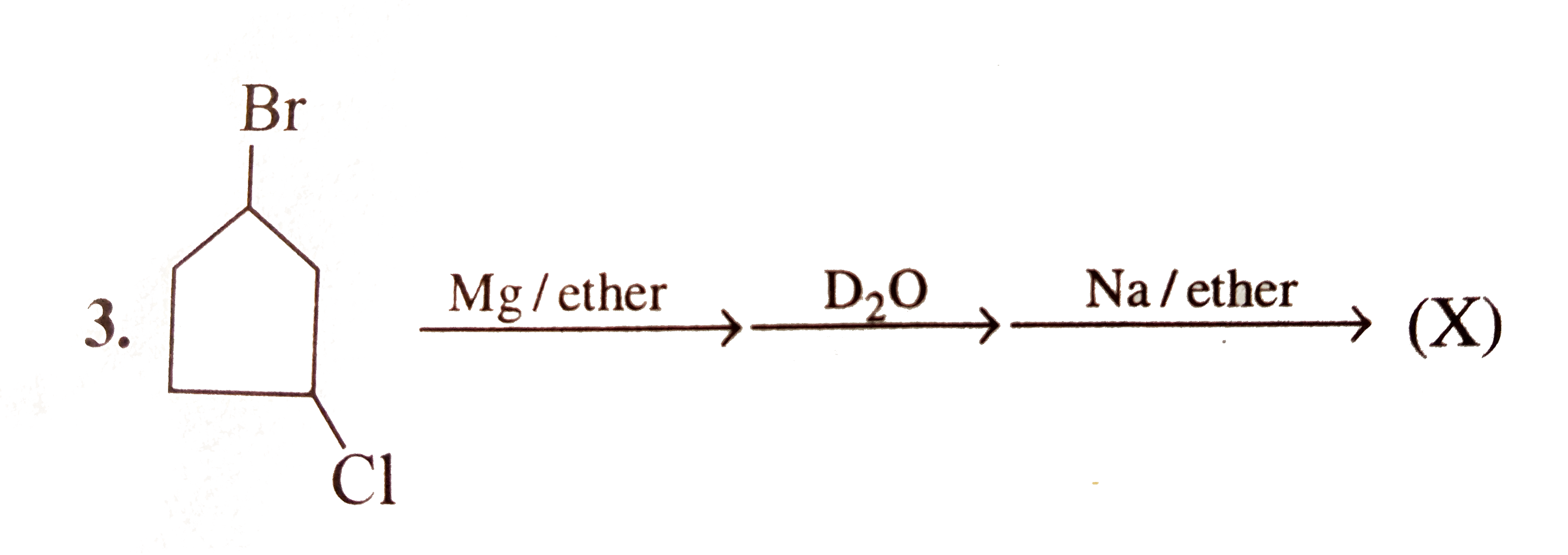D−glucoseTollen's reagent−−−−−−−−→(A),
D−glucoseBr2−water−−−−−−→(B)
(A) and (B) are :
gluconic acid, gluconic acid
glucaric acid, gluconic acid
salt of gluconic acid, gluconic acid
salt of gluconic acid, glucaric acid
The correct Answer is:C
To solve the question, we need to determine the products (A) and (B) formed when D-glucose reacts with Tollen's reagent and bromine water, respectively.
Step 1: Understanding D-Glucose Structure
D-glucose is an aldohexose sugar with the following structure:
- The molecular formula is C₆H₁₂O₆.
- The structure includes an aldehyde group (CHO) at one end and five hydroxyl (OH) groups.
Step 2: Reaction of D-Glucose with Tollen's Reagent
When D-glucose reacts with Tollen's reagent (Ag(NH₃)₂⁺ in the presence of OH⁻), the aldehyde group (CHO) is oxidized to a carboxylic acid (COOH). The reaction can be summarized as follows:
- The aldehyde group (CHO) is converted to a carboxylate ion (COO⁻).
- The product formed is gluconic acid (C₆H₁₂O₇) in the form of its salt.
Product A: The product (A) formed from the reaction of D-glucose with Tollen's reagent is gluconic acid.
Step 3: Reaction of D-Glucose with Bromine Water
Bromine water (Br₂ in water) is a mild oxidizing agent. When D-glucose reacts with bromine water, the aldehyde group (CHO) is again oxidized to a carboxylic acid (COOH). The remaining hydroxymethyl group (CH₂OH) remains unchanged.
Product B: The product (B) formed from the reaction of D-glucose with bromine water is also gluconic acid.
Final Answer:
- (A) is gluconic acid (from Tollen's reagent).
- (B) is gluconic acid (from bromine water).
---
D-glucose is an aldohexose sugar with the following structure:
- The molecular formula is C₆H₁₂O₆.
- The structure includes an aldehyde group (CHO) at one end and five hydroxyl (OH) groups.
When D-glucose reacts with Tollen's reagent (Ag(NH₃)₂⁺ in the presence of OH⁻), the aldehyde group (CHO) is oxidized to a carboxylic acid (COOH). The reaction can be summarized as follows:
- The aldehyde group (CHO) is converted to a carboxylate ion (COO⁻).
- The product formed is gluconic acid (C₆H₁₂O₇) in the form of its salt.
Bromine water (Br₂ in water) is a mild oxidizing agent. When D-glucose reacts with bromine water, the aldehyde group (CHO) is again oxidized to a carboxylic acid (COOH). The remaining hydroxymethyl group (CH₂OH) remains unchanged.
- (A) is gluconic acid (from Tollen's reagent).
- (B) is gluconic acid (from bromine water).
Topper's Solved these Questions
Similar Questions
Knowledge Check
D-glucose Reagent−−−−→D-gluconic acid.
This reagent can be :ASchiff's reagentBFehling solutionCBr2+H2ODHNO3D-glucose HO−⇐=⇒A+B, A and B are :
AD-mannose & D-mannitolBD-mannose & D-FructoseCD-Allose & D-AltroseDD-Glucose and D-IdoseGlucose Br2+H2O−−−−−→ Product,Product is :
Aglucaric acidBgluconic acidChexanoic acidDbromo hexane
D-Glucose NHO3−−−→Δ(A), Product (A) is :
View SolutionPh−O∣∣C−NH2+Ph−CH2−O∣∣C−15NH2ΘOH+Br2−−−−−−−→A+B
Product A and B are:
View Solution Mg/ether−−−−−→ overset (D_(2)O)rarroverset (Na//ether)rarr (X)
Mg/ether−−−−−→ overset (D_(2)O)rarroverset (Na//ether)rarr (X)
The compound (X) is:
View SolutionPh−C≡C−PhNa−−−−−→Liq.NH3(A)D2−−→Pt(B) Product (B) is
View SolutionZnCI2+NaHCO3Heat−−→(A)Heat−−→(B)+(C)+H2O(B)+NaOH→(D)
Identify the compound (D) present in the solution.
View Solution
